Dateline – June 13, 2014
NOTE: This post is part of a continuing series of observations: [ First | << Prev | Next >> ]
I am really astounded by how rapidly the little Mute Swan cygnet is growing these days. The young swan is rapidly gaining on his mother in size, but he still has quite some way to go before he will be fully feathered and ready to fly.
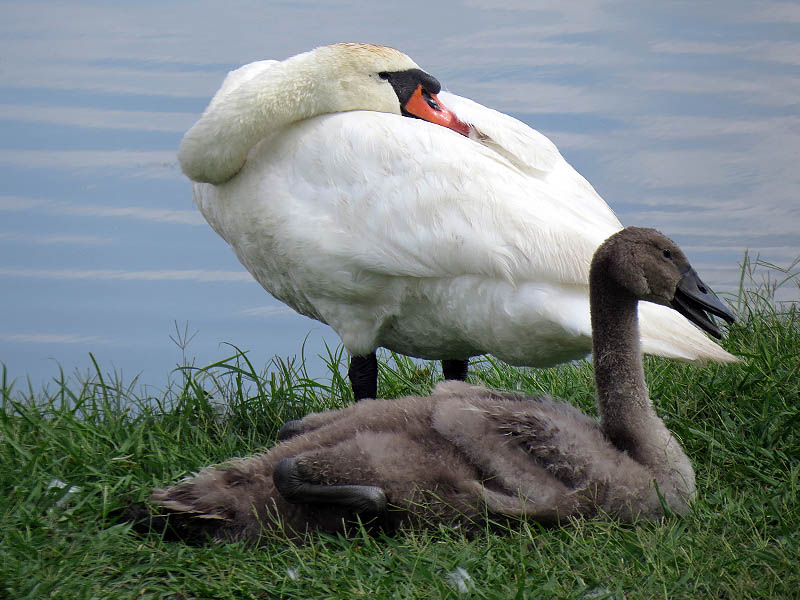
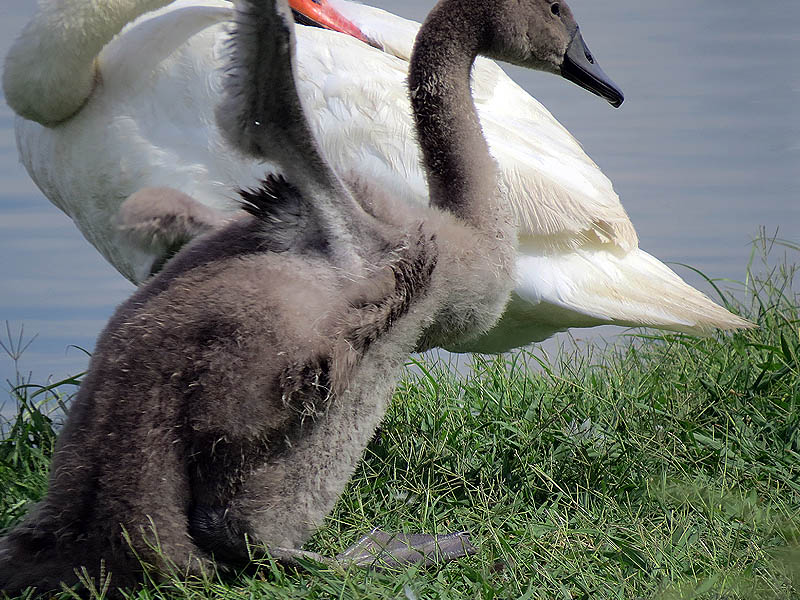
The little guy was even ready to assert a little independence as he ventured into the water without his parents accompanying him. This may be the first time I have see the young swan take a step like this on his own.
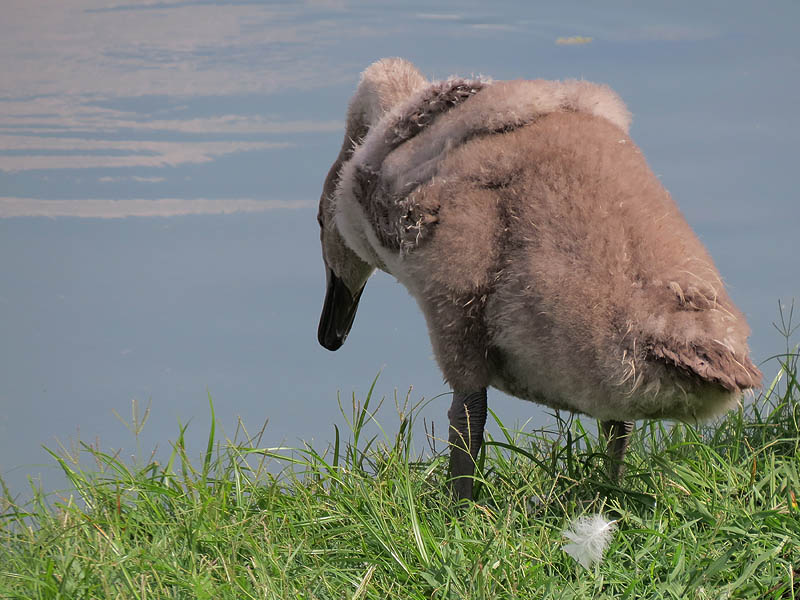
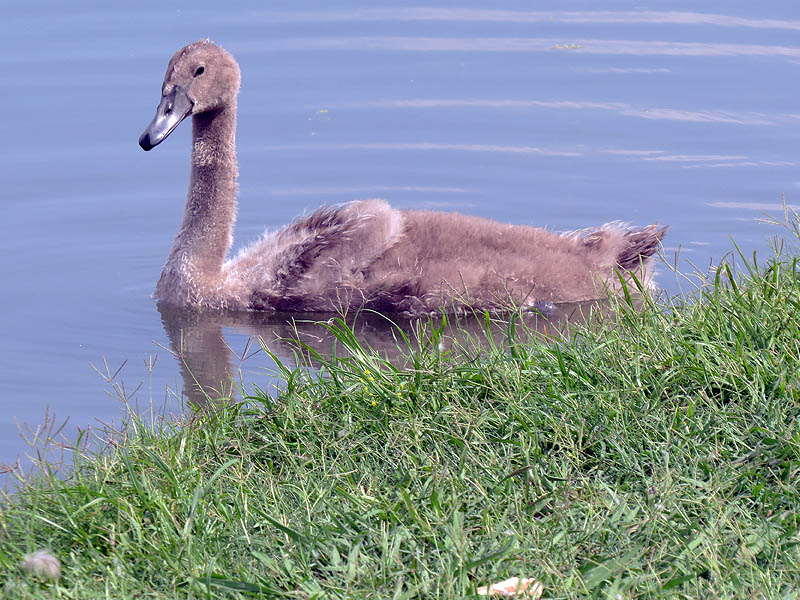
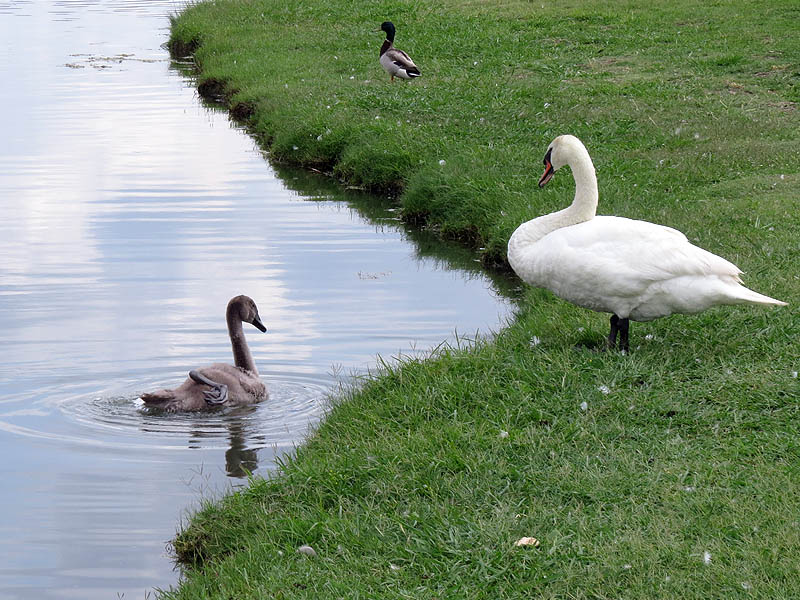
Once in the water, the juvenile swan engaged in an odd behavior that I have also observed the adult birds doing in the past. The cygnet would lift his leg and webbed foot out of the water and extend it far to the rear as if he were stretching after a nap.
After doing this repeatedly, he eventually rested his leg on his side high enough where it still remained out of the water. The young swan stayed in the positions for an extended period of time while moving about on the water using only his other foot to paddle with.
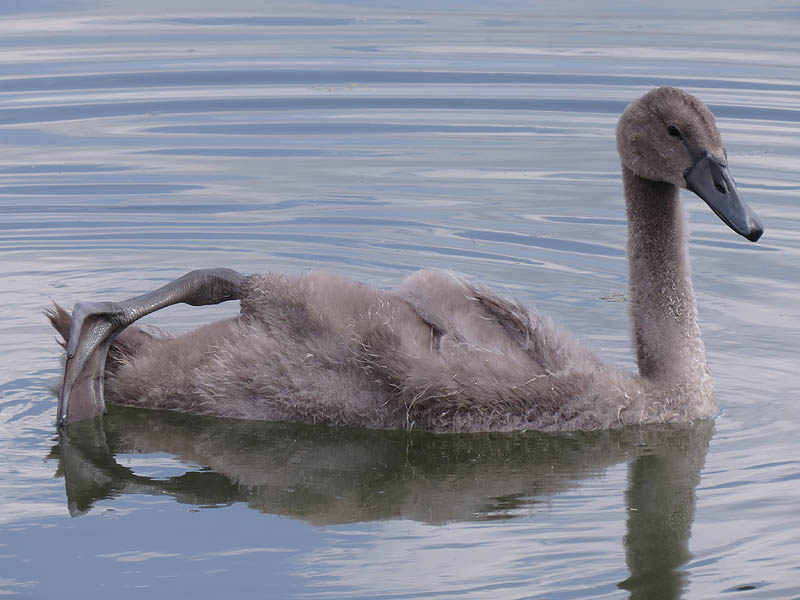
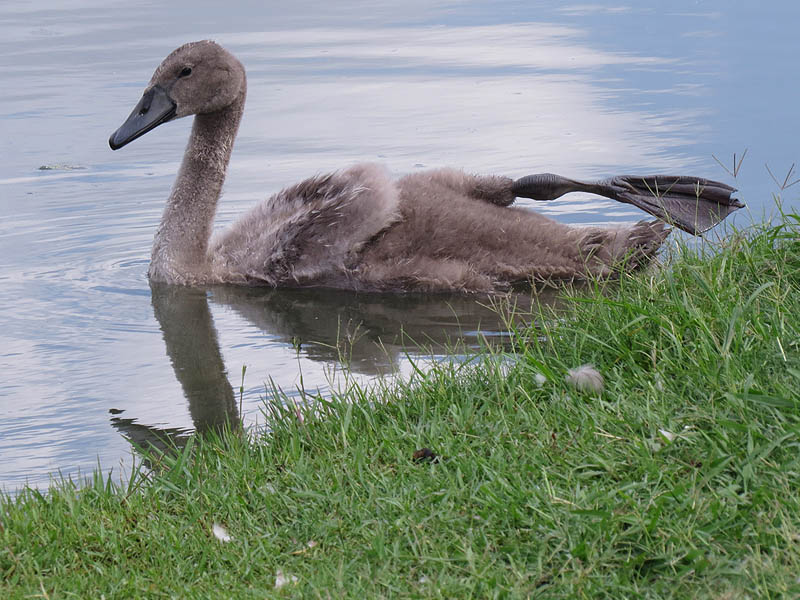
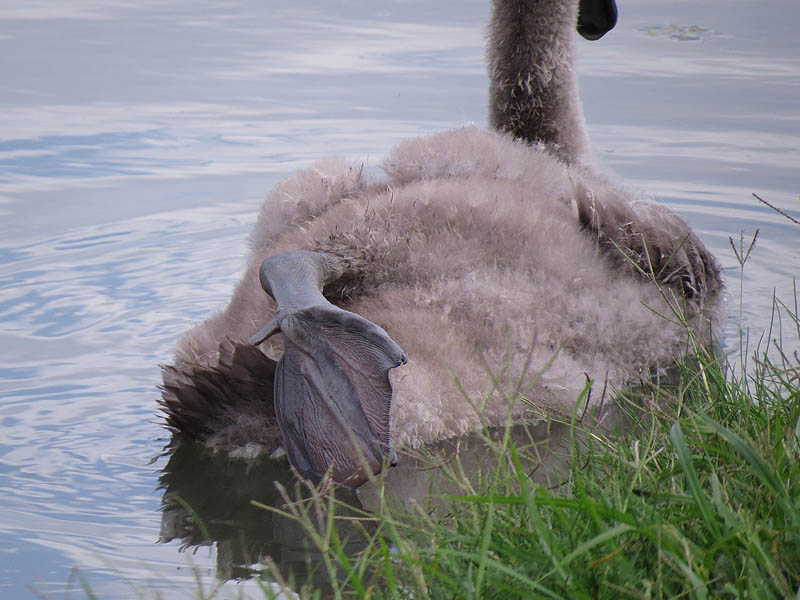
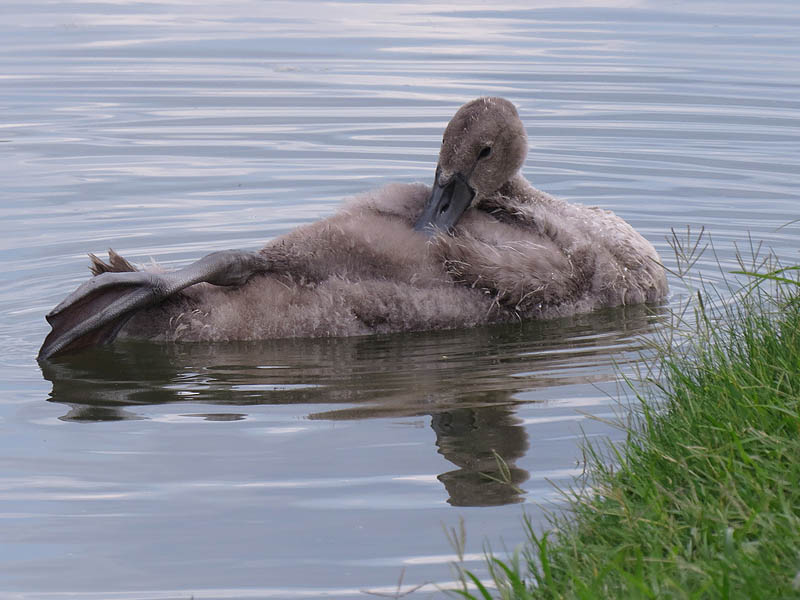
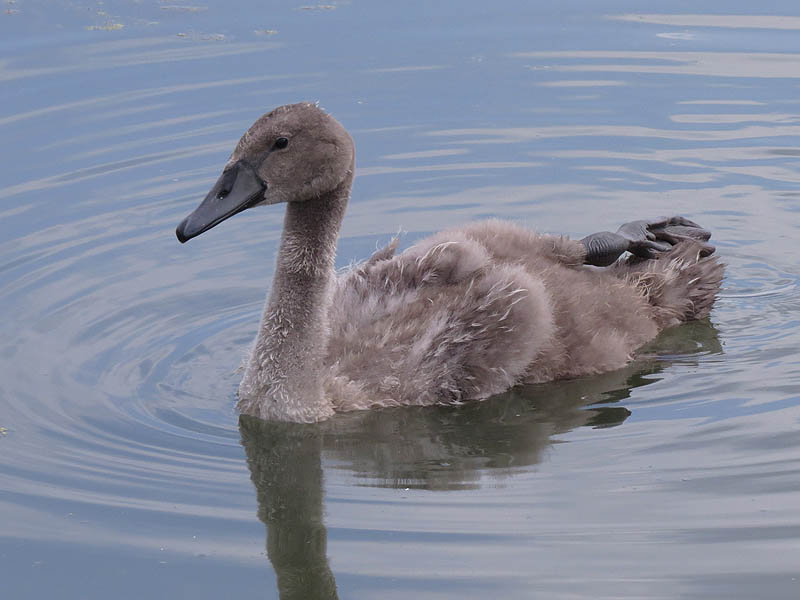
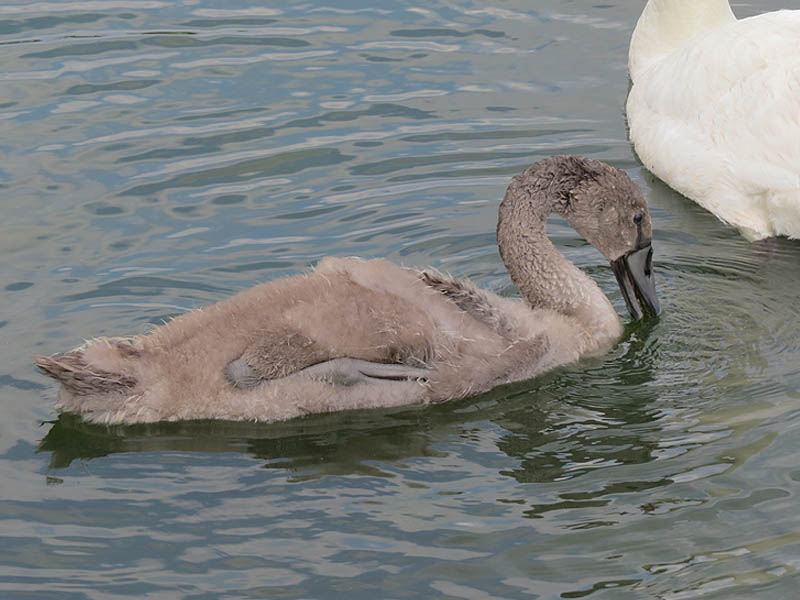
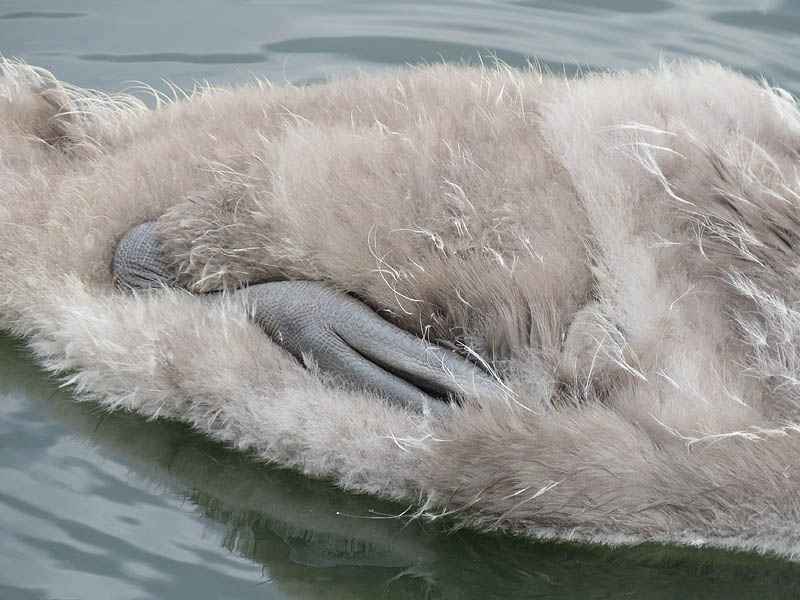
The feather development that was noted beginning last week continues this week. Tail feathers are becoming very distinct and his tiny wings are now covered in pin feathers. It will be interesting to observed how the young bird’s plumage comes in over the next month or so.
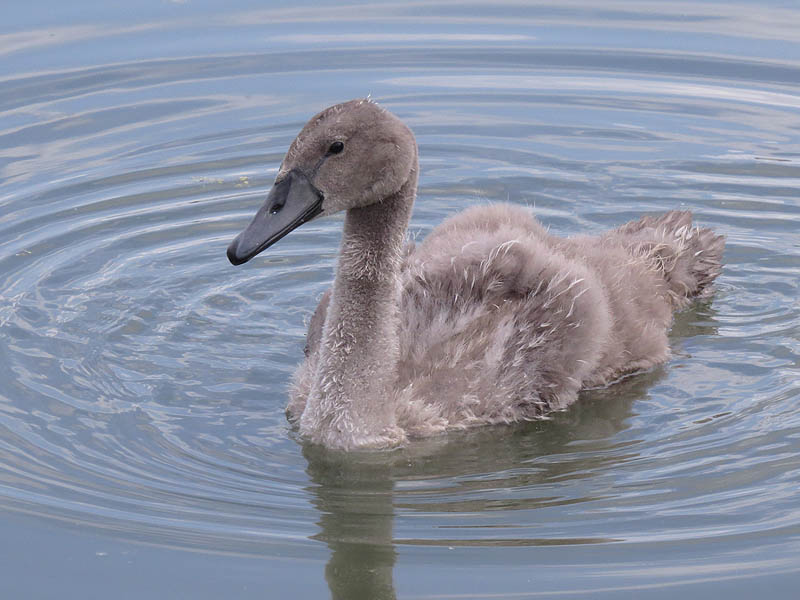

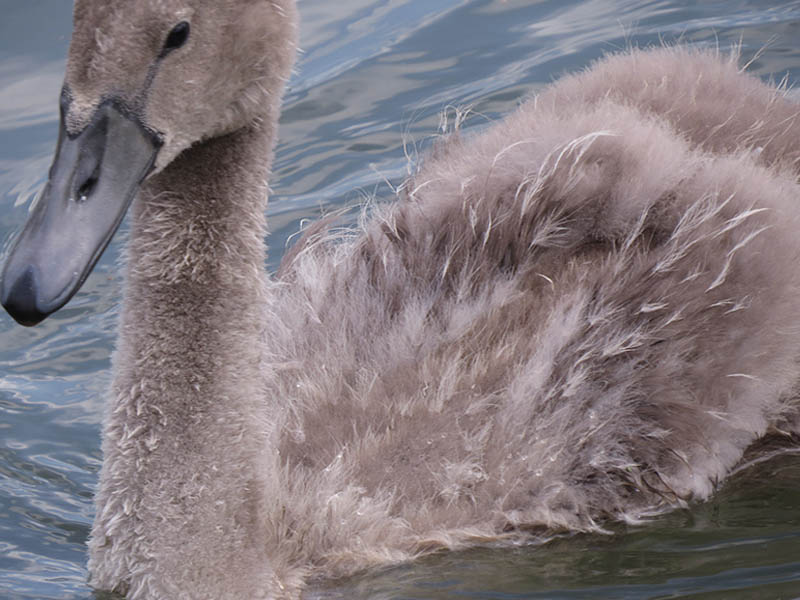
Eventually mom and dad Mute Swan joined their adventurous youngster in the pond and the family group moved about the water feeding together. See the video below for a few snippets of their various activities.
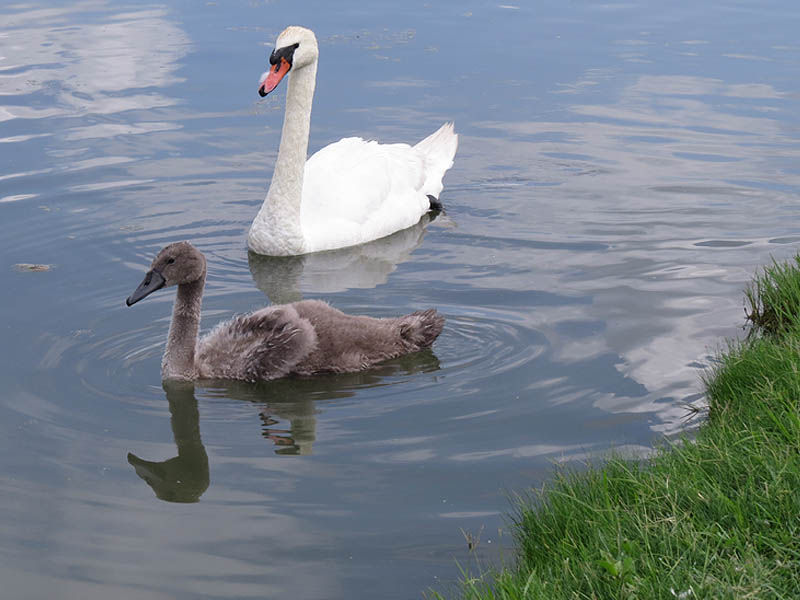


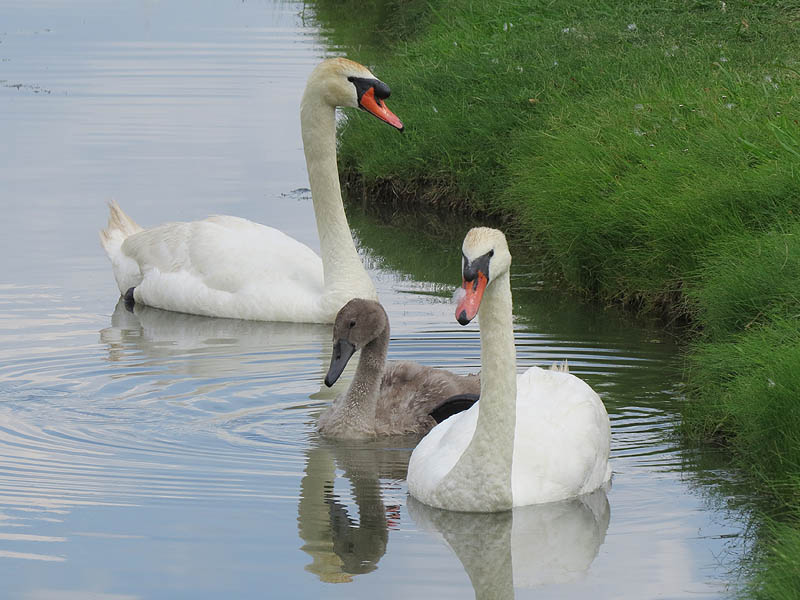
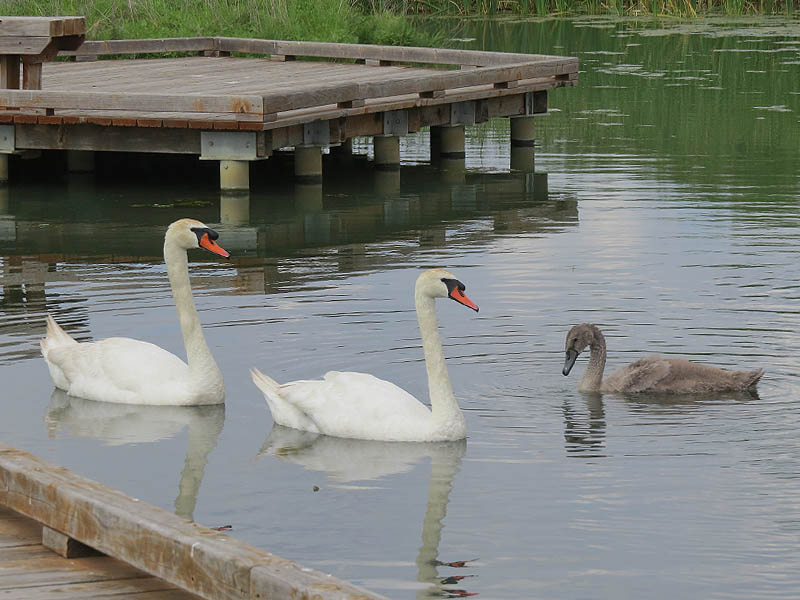
As is the norm this time of year, dragonflies were buzzing about the water in large numbers. I photographed a couple of the quick moving insects, neither of which would assist me by staying still for very long!
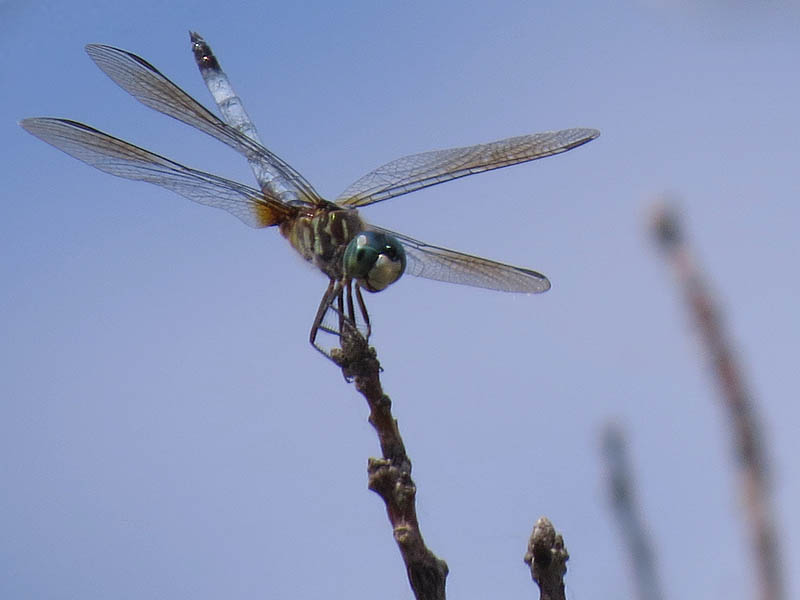
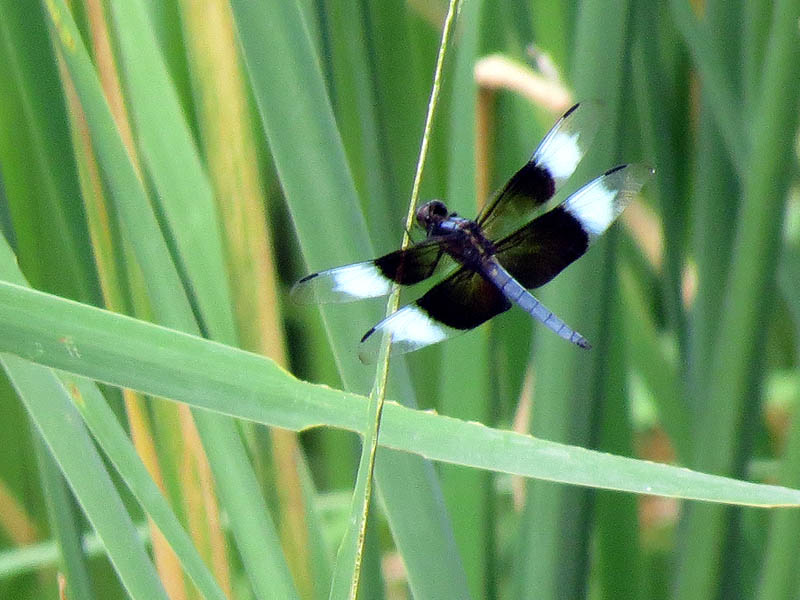
The theme song for this walk around the park was provided by a resident Northern Mockingbird. This bold fellow was singing his heart out from a treetop high above me and the other park patrons. This was a beautiful summer afternoon, complete with a slight—but cooling breeze—and beautiful blue skies. The song of the mockingbird was a perfect way to top it all off!
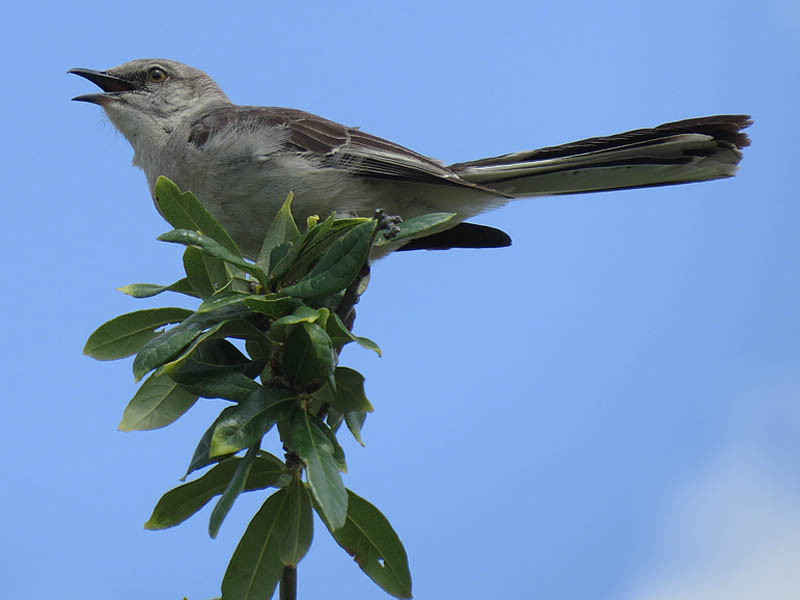
Last week one of my readers clued me into the possibility of some juvenile Green Herons beginning to branch in the willow trees located at the south end of the lake. Sure enough, the three young birds were right where I was told they would be when I stopped by to check it out. There were three fledgling Green Herons in all—each a few days apart from the others in age.
On previous visits to the park, I had noticed adult Green Herons commuting back and forth between the Black Willow trees and the marshy reeds at the north end of the lake. I had wondered if they might be raising a brood at the far end of the lake, but did not like my chances for finding the nest, so I never bothered to look. I am so glad I got this tip, or I would have missed this great opportunity entirely.
The young herons still have a tolerance for being observed that an older bird would not retain. Their youthful indiscretions allowed me to approach within just a couple of yards of as the birds patrolled and played along the water’s edge. The juvenile herons practiced their flying skills with short hops and entertained themselves by attempting to catch buzzing insects with their beaks.

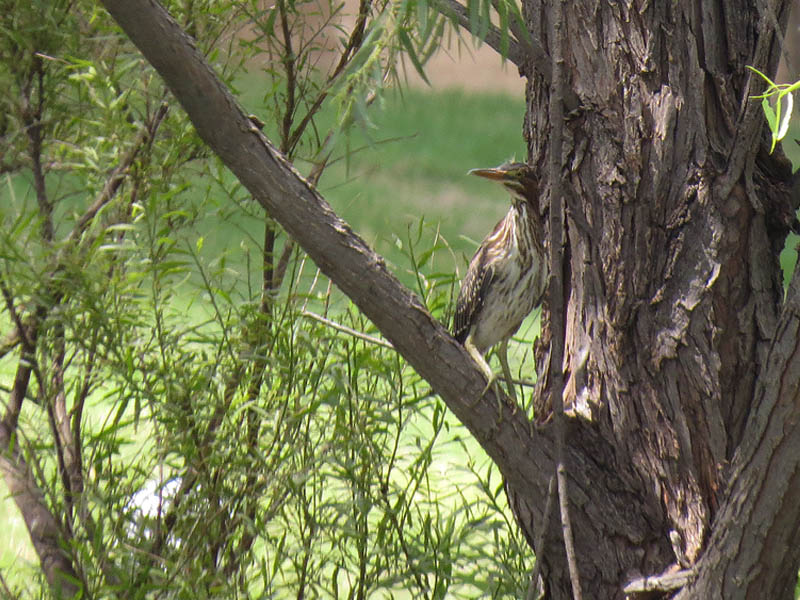
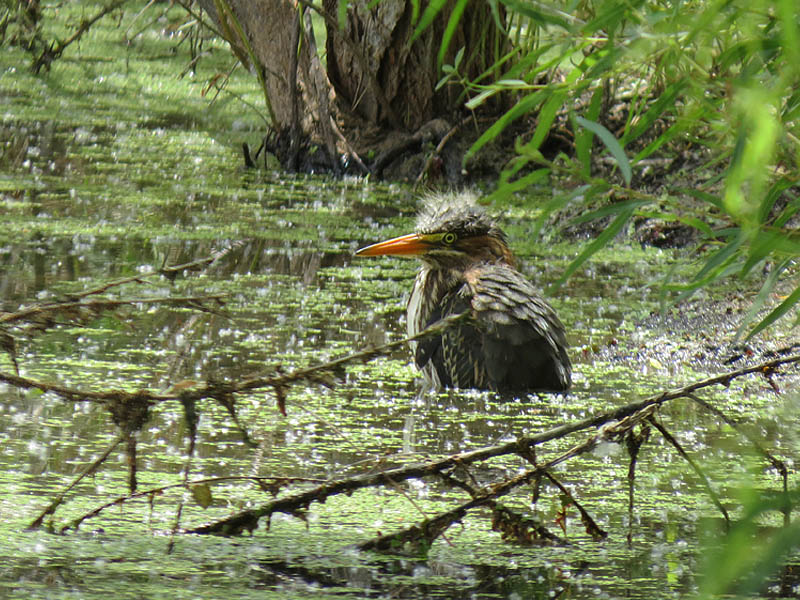




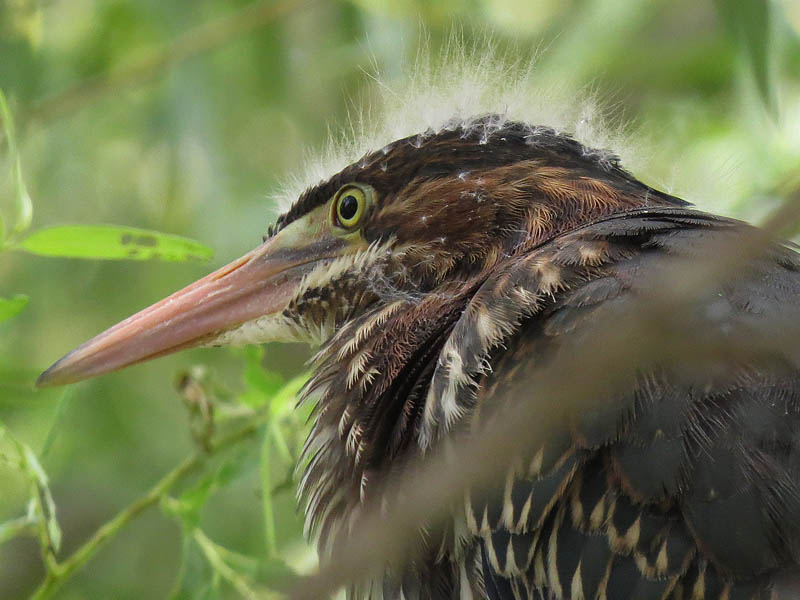
Also at this end of the pond was a well concealed American Bullfrog. This large amphibian was sitting in the water with just his head and a small part of his back exposed. I was surprised when the normally skittish bullfrog did not flee as I approached. When I reviewed my photographs at home the reason became clear. The bullfrog had some kind of injury to its eye on the side I was approaching from, and he just didn’t see me coming. A close look at the pictures show that the bullfrog’s cornea is cloudy and it eyelid has sustained an injury.

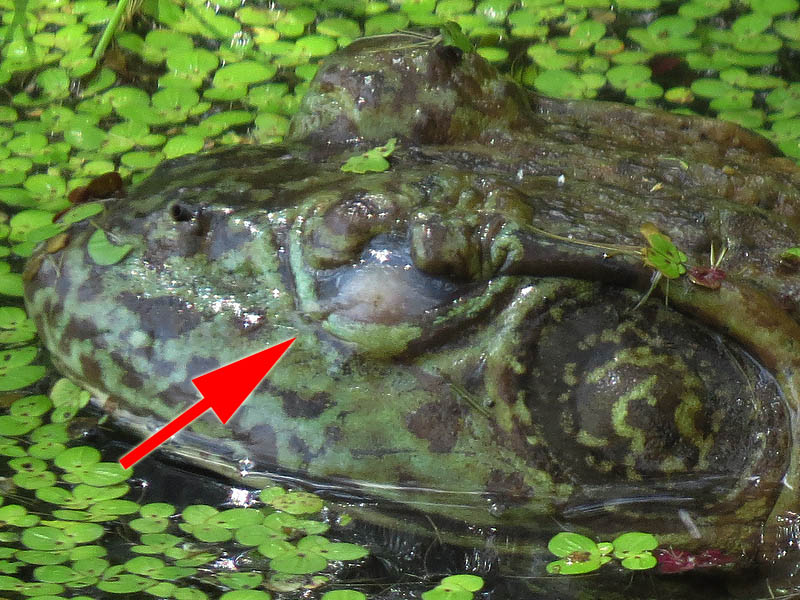
Being blind like this certainly makes this bullfrog extra vulnerable to predation, but in spite of this he seems to be doing ok. This particularly frog is and old timer and has grown to a remarkable size. See the picture below for a comparison of the bullfrog’s size to that of one of the fledgling—but adult-sized—Green Herons.
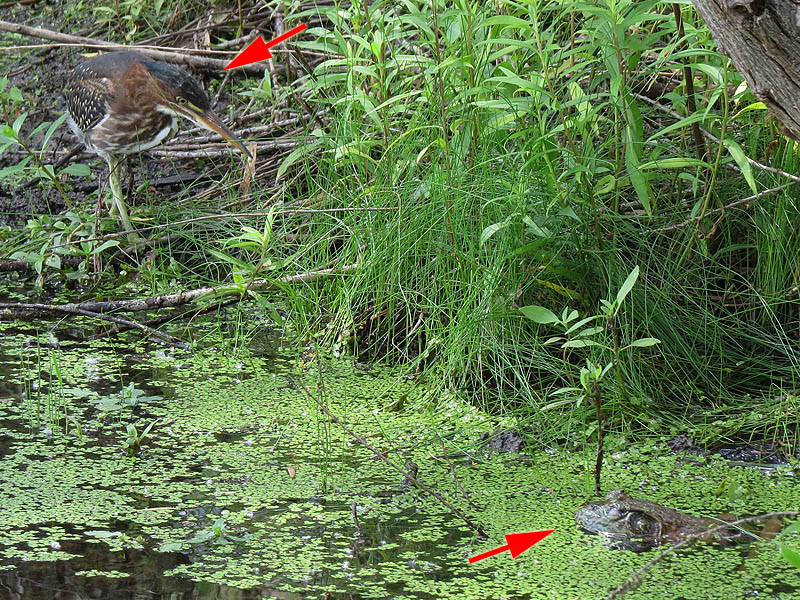
Many of the lake’s young Mallards are rapidly approaching fledging age and will be flying soon. The oldest were busy exercising and strengthening their wings in anticipation of their upcoming first flight. Other groups of juvenile Mallards of various ages gathered together mid-pond to feed. Some of these young birds were still with their mothers, but others were already on their own. The parents of these semi-independent juveniles are probably busy incubating new clutches of eggs, or maybe even caring for a second brood of young ducklings by now.
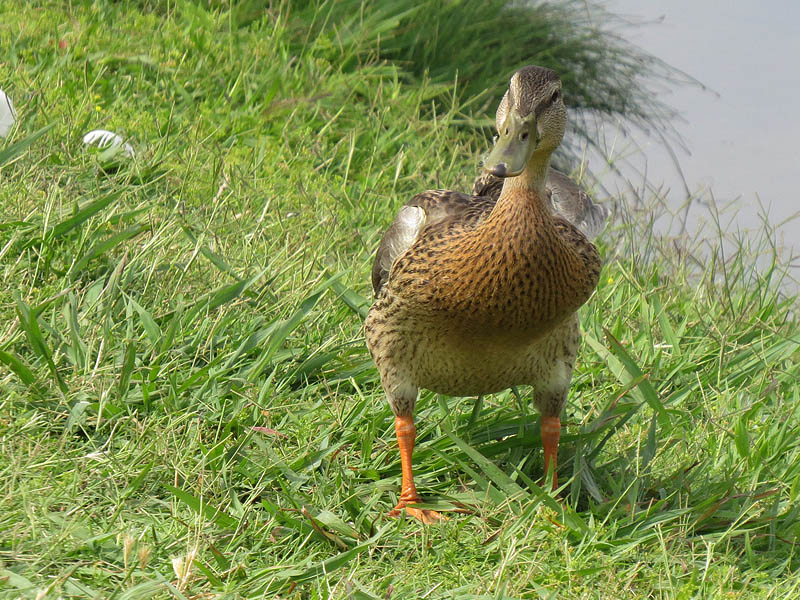



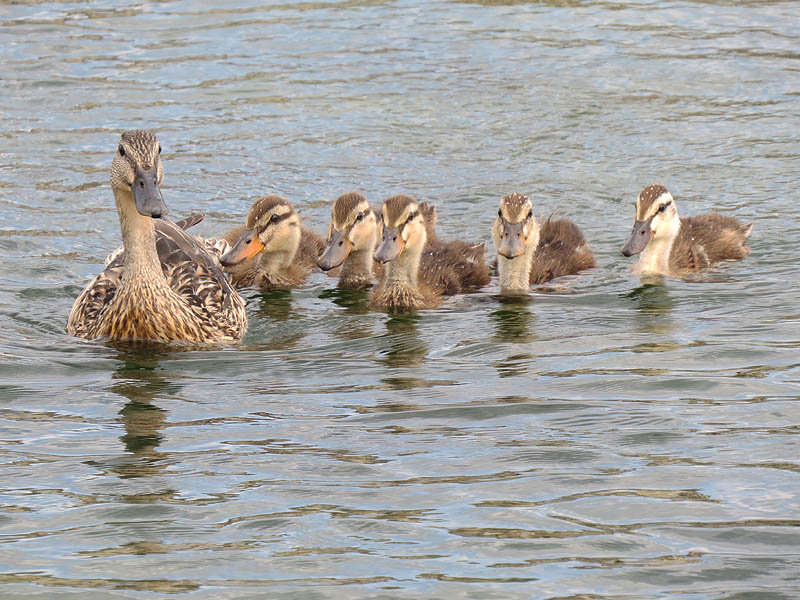
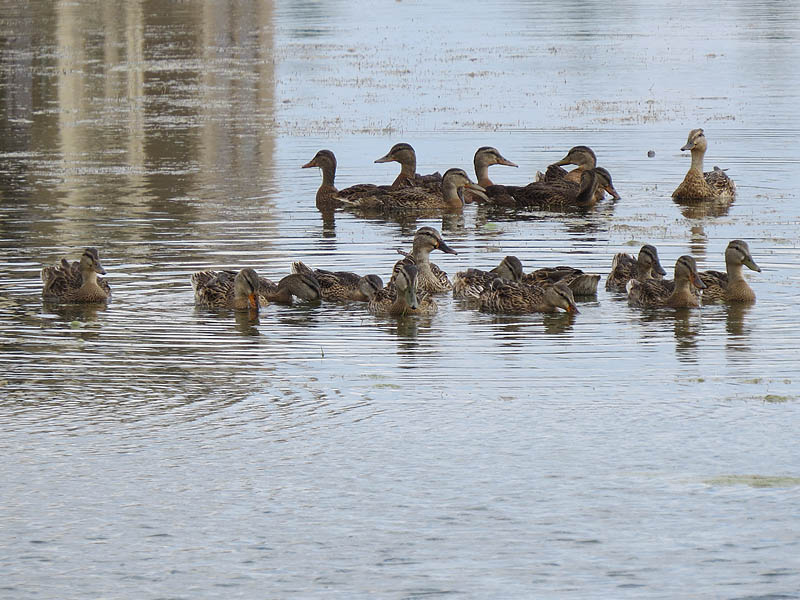
One of the odd things I have noticed with the young Mallards at this pond is that some of the older juveniles will dive completely under the water while feeding. This behavior struck me as unusual because Mallards are considered a “dabbling” ducks rather than “diving” ducks.
These terms describe how various ducks feed. Diving Ducks, as the name implies, feed by diving and swimming under the water in order to reach their desired aquatic vegetation. Dabbling ducks—like Mallards—feed by simply tipping their bodies end up in the water and stretching their necks to reach planets growing below the surface.
The video below contains a few seconds of footage of juvenile Mallards diving repeatedly as they feed with their mother.
Nearby, a Great Egret was observed fishing for minnows. At one point this long necked bird was seen having success with his piscatorial efforts. Great Egrets, and other herons, must consume an enormous amount of these small fish every day.
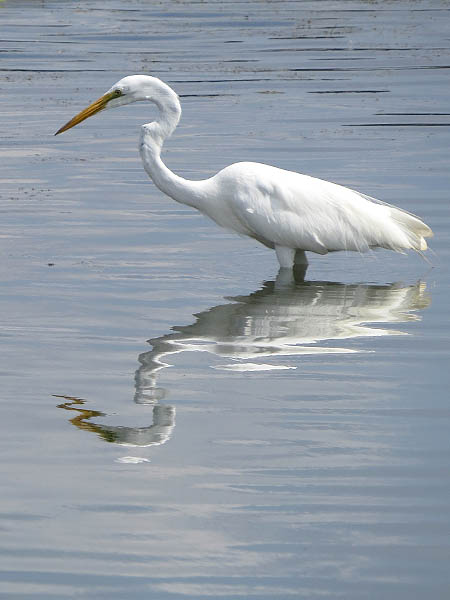


This small lake is home to many Nutrias, and most have become very tolerant to the presence of people. These large rodents go about their business with little concern about the people coming and going all around them. The individual in the photograph below was feeding leisurely just offshore and barely taking notice of the group of children playing noisily nearby.
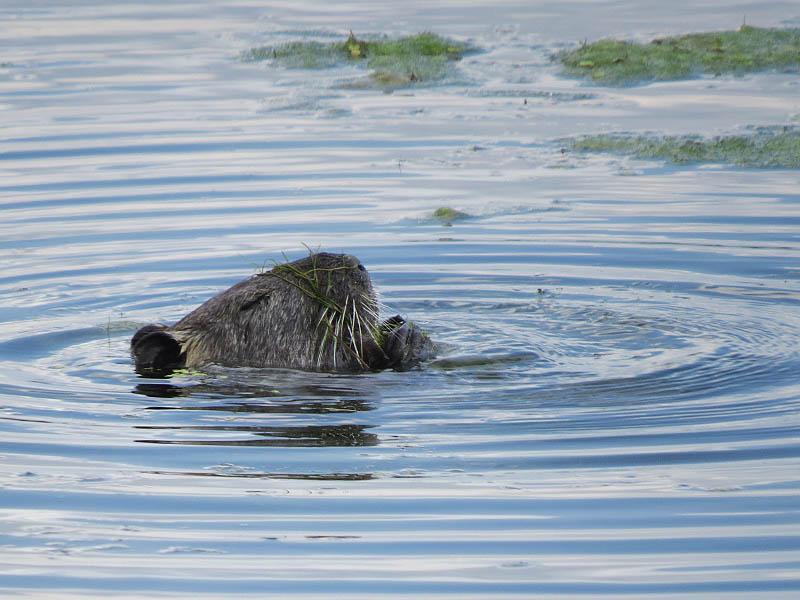
I made a point to stop by and check on the Scissor-tailed flycatcher nest again this week, and I was amazed by the progress these young birds have made. The fledgling flycatchers were branching out and only a day or two from flying. They will not be here when I check on the nest again next week!
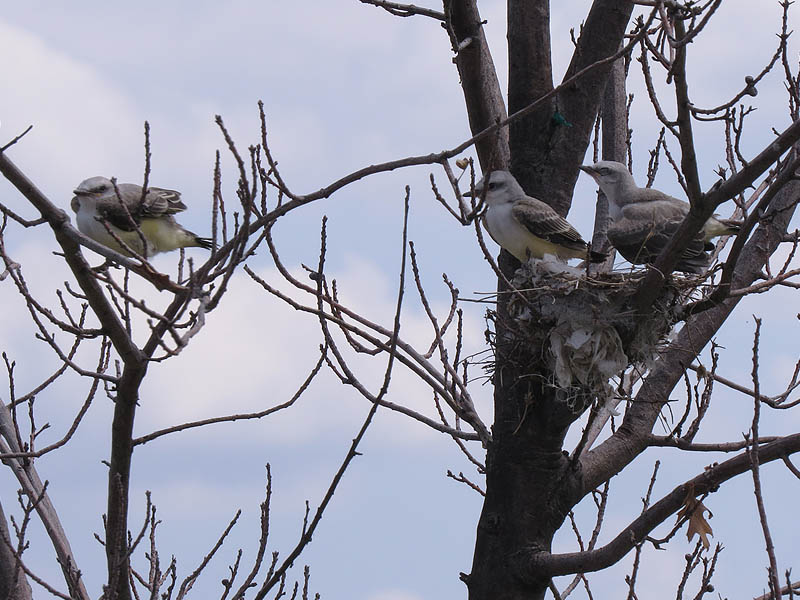
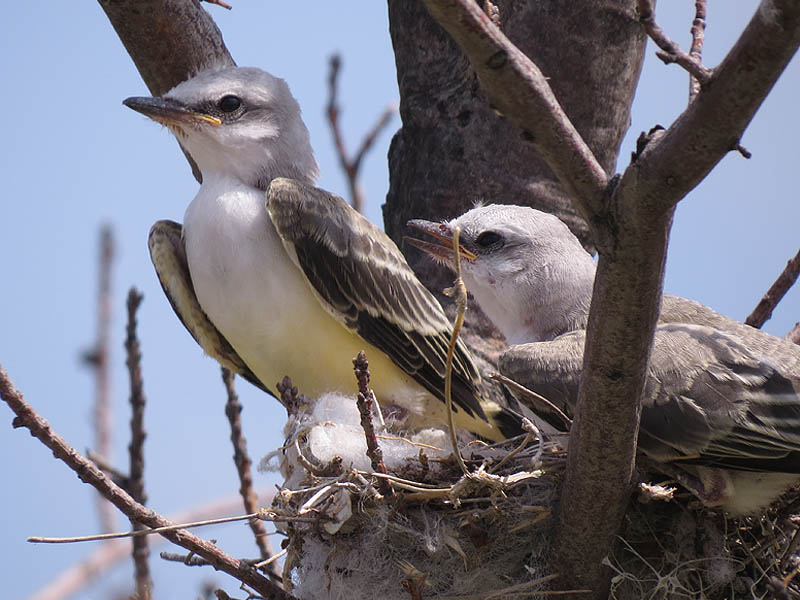
The three fledglings were a delight to watch as they frequently exercised their wings. Also amusing was how easy they made it for me to know when one of their parents was approaching with food. All three of the juvenile birds kept a constant watch on the sky for the return of the adult birds. When either of the parents came into view the excitement demonstrated by the youngsters was palpable and unmistakable!

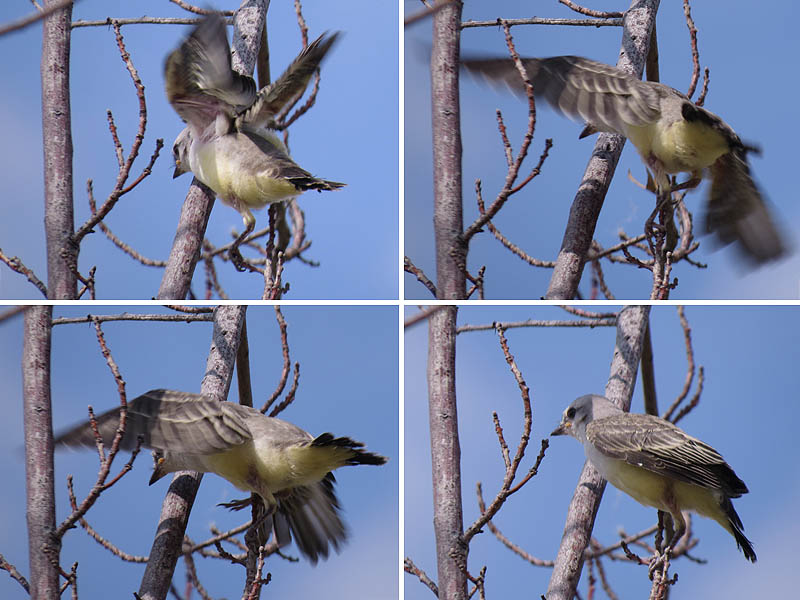

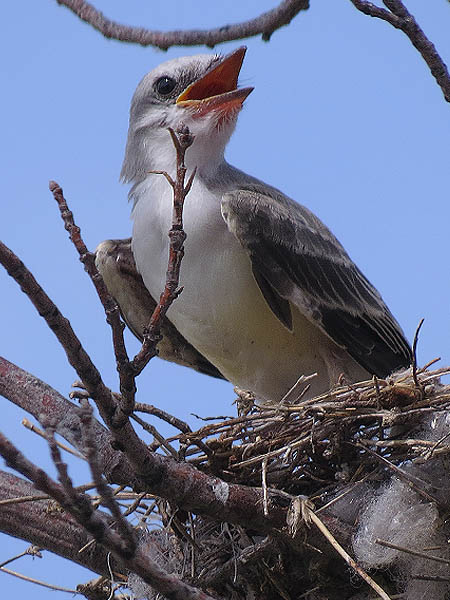
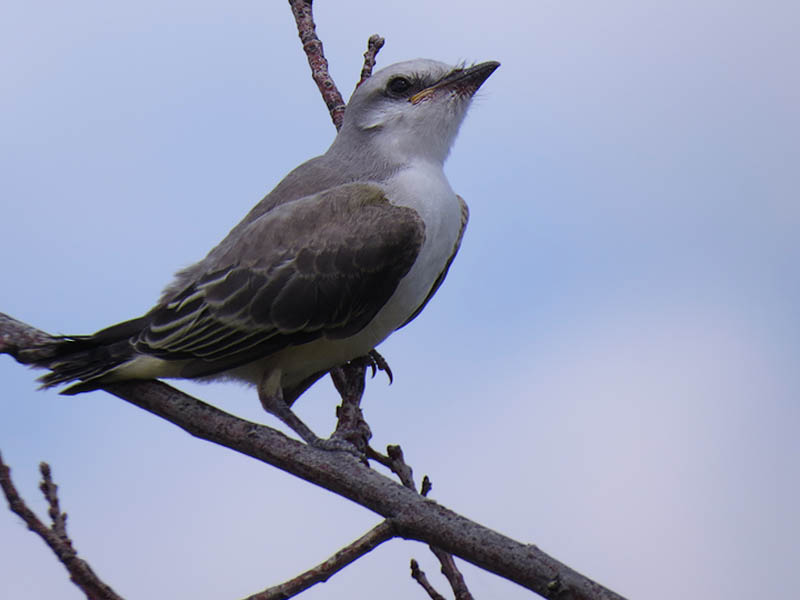


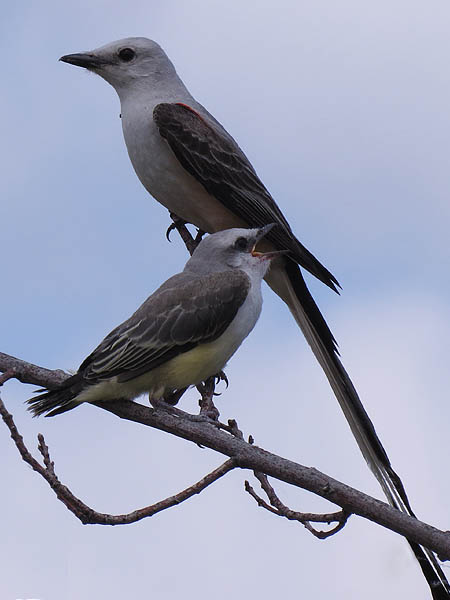
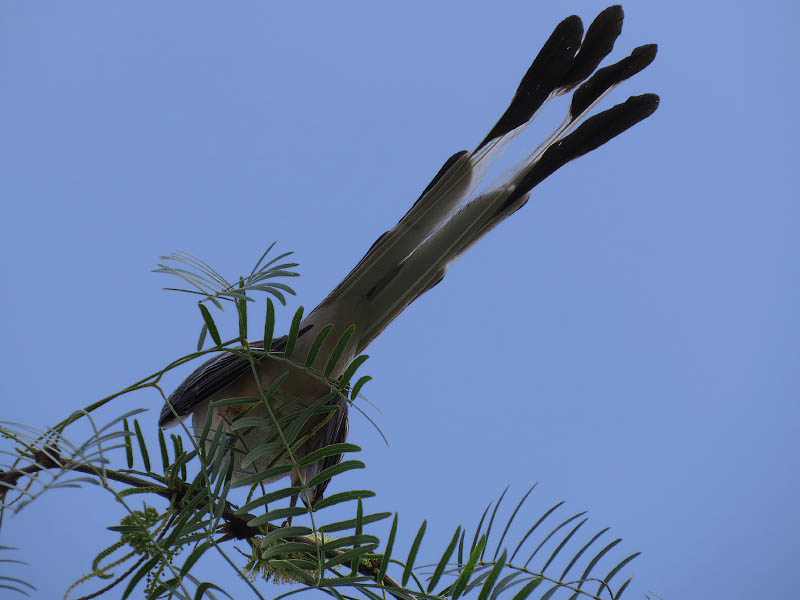
The Red-eared Slider turtles at this pond are also very interesting to observe. Dozens of them sometime gather together in the shallows near the center of the pond to bask just below the surface of the water. Others make use of the many man made structures around the water for their basking needs.
Some of the more resourceful turtles have even figured out that when people bring bread to feed the ducks, that there will be plenty to eat for the turtles as well. It is quite interesting to watch a determined turtle swim his way through a throng of feeding ducks in order to get his fair share of the bread bounty!
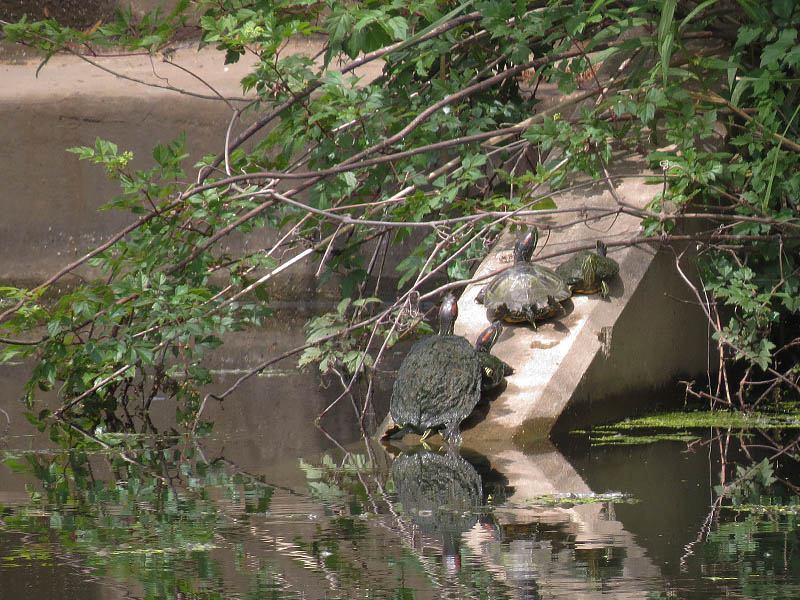
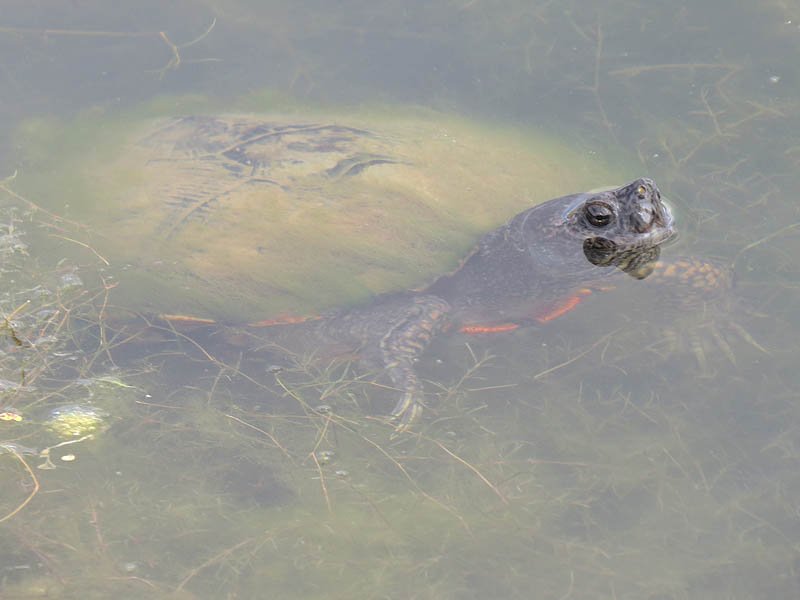
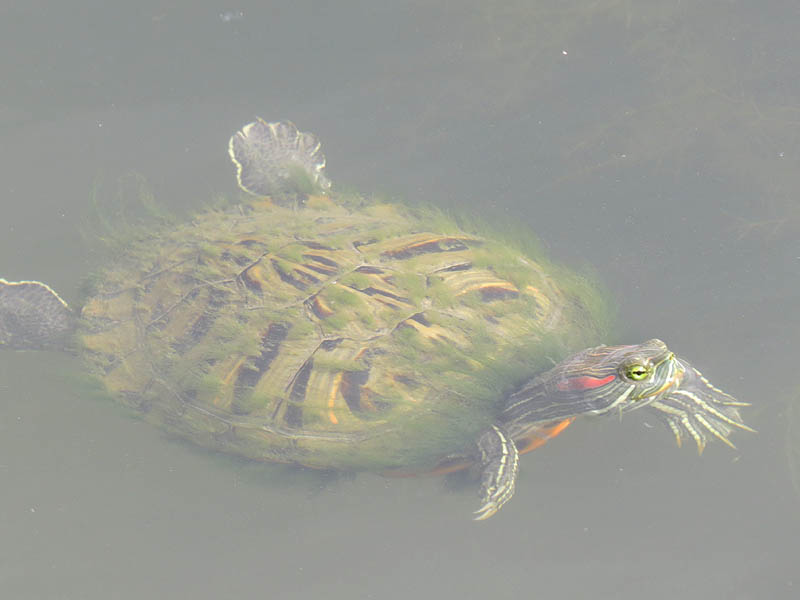
I spotted a lone Yellow-crowned Night Heron as I was preparing to leave the park. I was out of time and could not investigate this bird more closely, but I was able to get this one long distance parting shot!
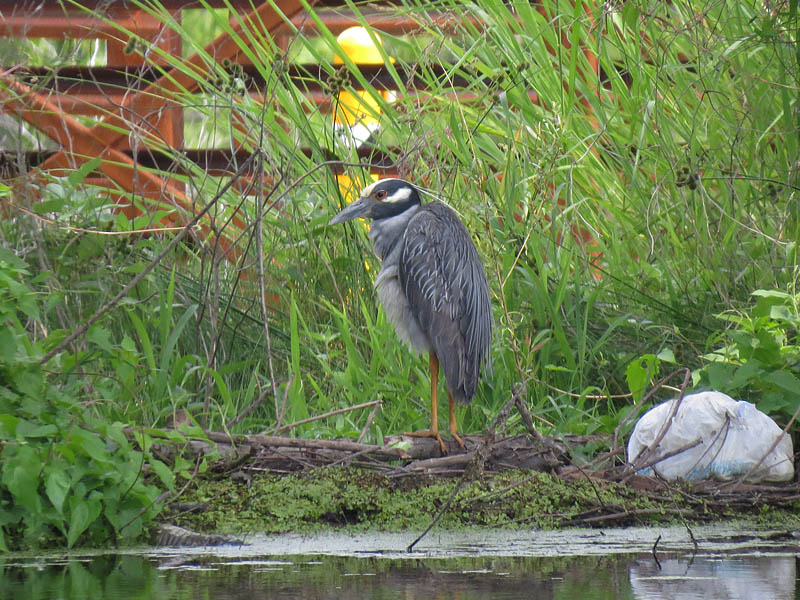
This small lake and park in Carrollton is always a productive place for urban wildlife photography, but on this day I had at least one other notable encounter here in the metroplex. The pictures below are of a pair of White-tailed Deer I photographed near a busy road in The Colony, Texas.
The two young bucks were out and active at midday which was something of a surprise to me—especially considering how much traffic was passing by just a short distance away. The pair is showing the early stages of antler growth and seemed a little preoccupied with each other. I observed the deer for quite sometime before they ever noticed me, even though I was standing out in the open the entire time. When the pair did finally become aware of my presence it was unmistakable. After a few snorts and stomps the two insulted deer bounded away and soon disappeared into the surrounding woods.
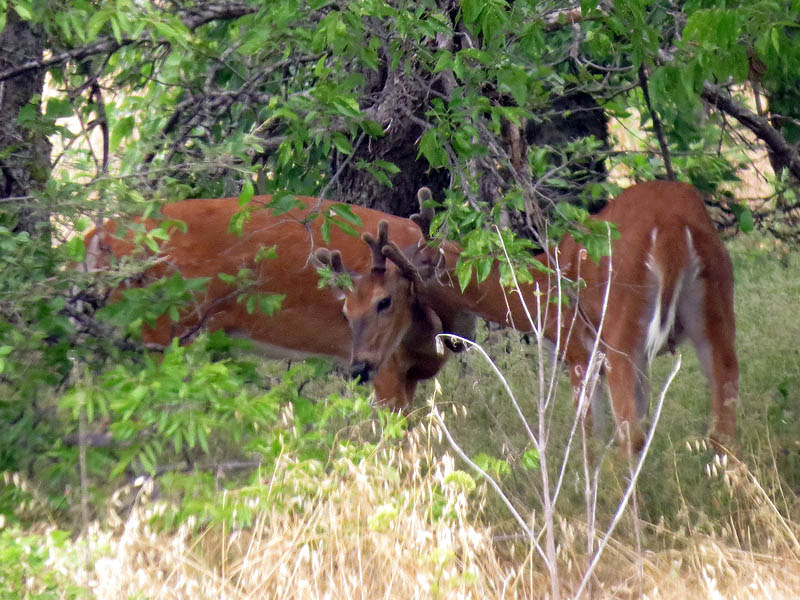
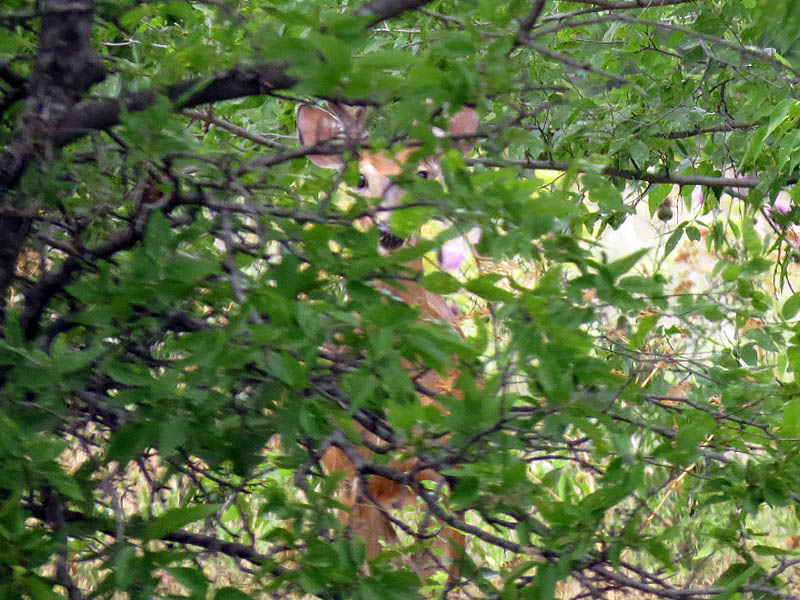
Some of you may also be wondering about the clutch of Mallards eggs that was removed from a nearby parking lot by a licensed wildlife rehabilitator a few weeks ago. As I reported last week, the recovered eggs were incubated successfully and all ten hatched. Since then the young ducklings have been moved into an inclosure with other ducklings of a similar age.
This particular rehab facility currently has many young Mallards in their care—as is always the case this time of the year. All of these juvenile ducks will be returned to the wild once the reach the appropriate age. The smallest of the ducklings in the picture below are from the clutch that I have documented in previous articles.
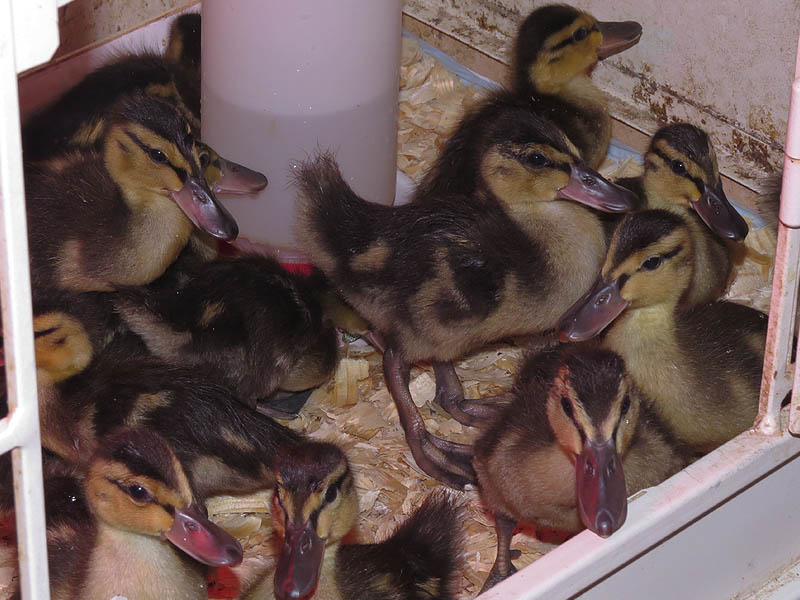
NOTE: This post is part of a continuing series of observations: [ First | << Prev | Next >> ]


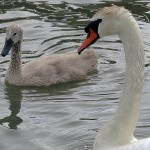




Really nice photos and commentary Chris. I suspect that the young mallards dive simply because they are not big enough to reach the bottom by dabbling. They may be more agile than the older birds, like brown bear cubs (and human children) climbing trees, an action seldom carried out by adults of either species.
Thank you, David! I agree with your assessment of the young Mallards!